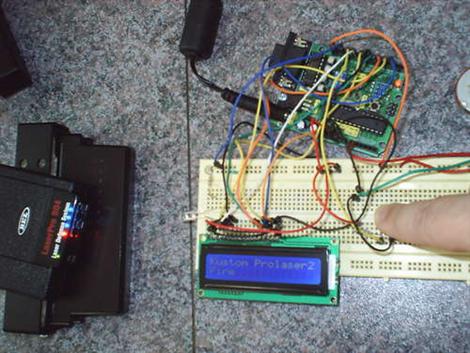[flickr video=http://www.flickr.com/photos/peplop/4106571163/]
We ask, who wouldn’t want a rotating motion and distance tracking radar? Sure in today’s day and age anyone could purchase a wide-angle sonar or IR solution that achieves the same goal, but [LuckyLarry] took it old school and made his own rotating radar. He used an Arduino, servo, and ultrasonic sensor as a base to gather data, and the open source programming language Processing to draw the data on the screen. He says it’s a little inaccurate currently, but will try out some other sensors in the future.
















